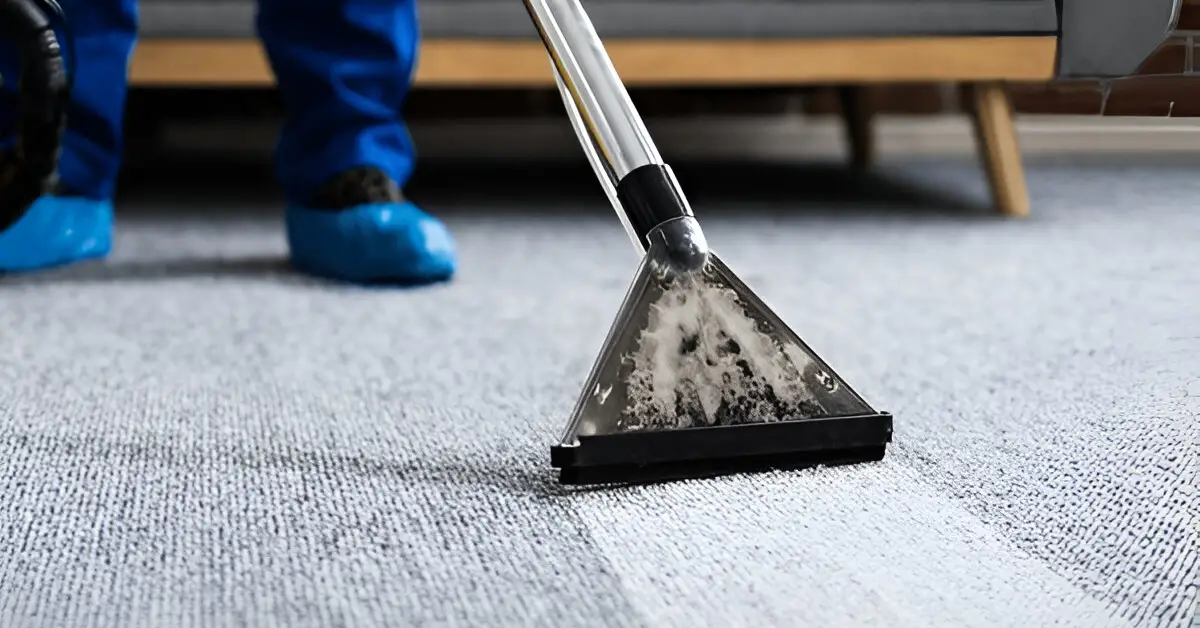Mold in carpets is a common problem, especially in areas with high humidity or moisture issues. If left untreated, it can lead to unpleasant odors, stains, and even health risks. Fortunately, removing mold from carpet is possible with the right approach.
The carpet cleaning process starts with proper preparation, including improving ventilation and wearing protective gear. Next, a thorough vacuuming using a HEPA-filter vacuum removes loose mold spores. A cleaning solution—such as white vinegar, baking soda, or a commercial mold remover—is then applied to kill mold at the root. Steam cleaning follows to eliminate any remaining spores and dirt trapped deep in the fibers. Finally, the carpet must be dried completely using fans, dehumidifiers, or direct sunlight to prevent mold from returning.
Why Mold Grows in Carpets
Mold thrives in warm, damp environments with limited airflow. Carpets can trap moisture from spills, leaks, or high humidity, creating the perfect breeding ground for mold spores. If moisture isn’t dried quickly, mold colonies can form deep within carpet fibers.
Mold exposure poses significant health risks, particularly for seniors, children, and those with respiratory conditions. According to the Centers for Disease Control and Prevention (CDC), mold can cause:
- Allergic reactions such as sneezing, skin irritation, and red eyes.
- Respiratory problems including wheezing and shortness of breath.
- Long-term health issues if mold exposure continues over time.
Importance of Timely Mold Removal
Ignoring mold in carpets can lead to permanent damage and costly replacements. Mold spores spread quickly, affecting air quality throughout the home. The New Zealand Ministry of Health recommends immediate cleaning and drying of carpets to prevent mold-related health risks and structural damage.
Tools and Materials Required for Cleaning Carpet
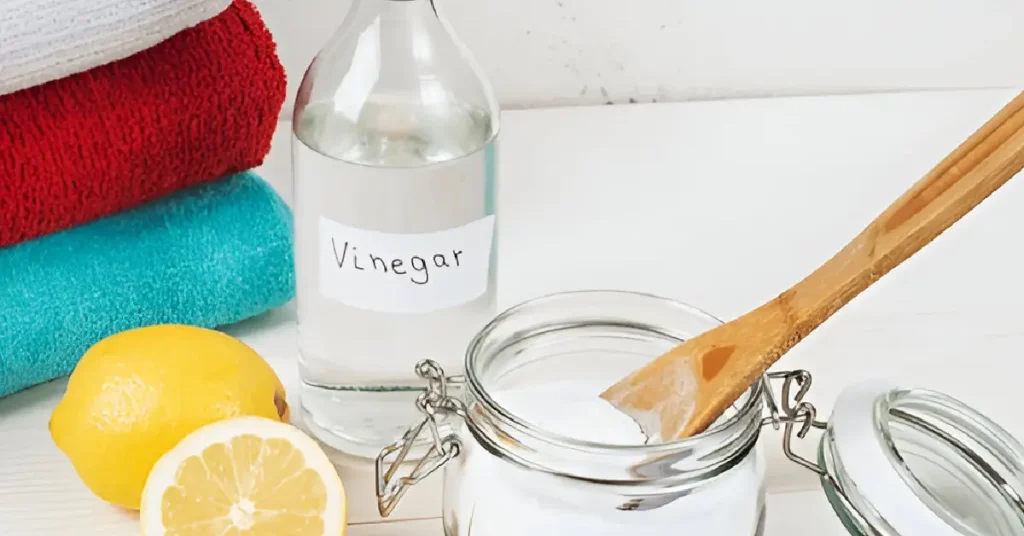
Before you start cleaning, gather the right supplies to ensure safe and effective mold removal.
- Gloves to protect hands from mold spores and chemicals.
- Mask and goggles to prevent inhalation of airborne mold particles.
- Baking soda – Absorbs moisture and neutralizes odors.
- White vinegar – Kills mold spores and prevents regrowth.
- Tea tree oil – A natural antifungal agent.
- Borax – Kills mold and prevents it from returning.
- Commercial mold cleaner – Designed for deep cleaning and heavy mold infestations.
Equipment
- Vacuum cleaner (with HEPA filter) – Captures mold spores without redistributing them into the air.
- Stiff brush – Helps loosen mold from carpet fibers.
- Steam cleaner – Uses heat to kill spores.
- Dehumidifier and fans – Speeds up drying and reduces future mold risks.
Step-by-Step Guide to Cleaning Mold from Carpet
Step 1 – Prepare the Area
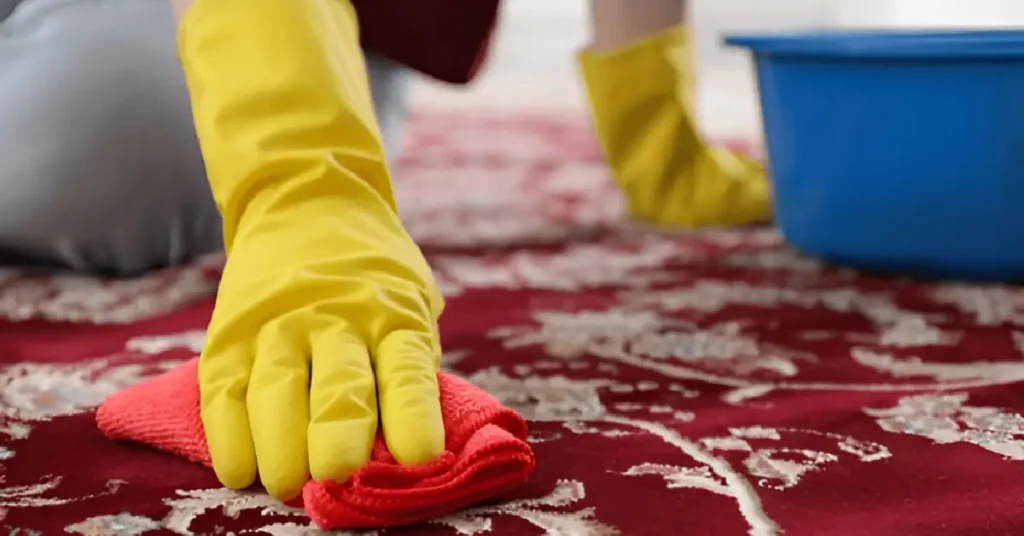
Start by ensuring proper ventilation. Open windows and turn on fans to circulate fresh air. Mold spores can spread easily, so isolate the affected area as much as possible.
Wear protective gear (gloves, mask, and goggles) to prevent direct exposure. If possible, remove nearby furniture or items that may also have mold contamination.
Step 2 – Vacuum Thoroughly
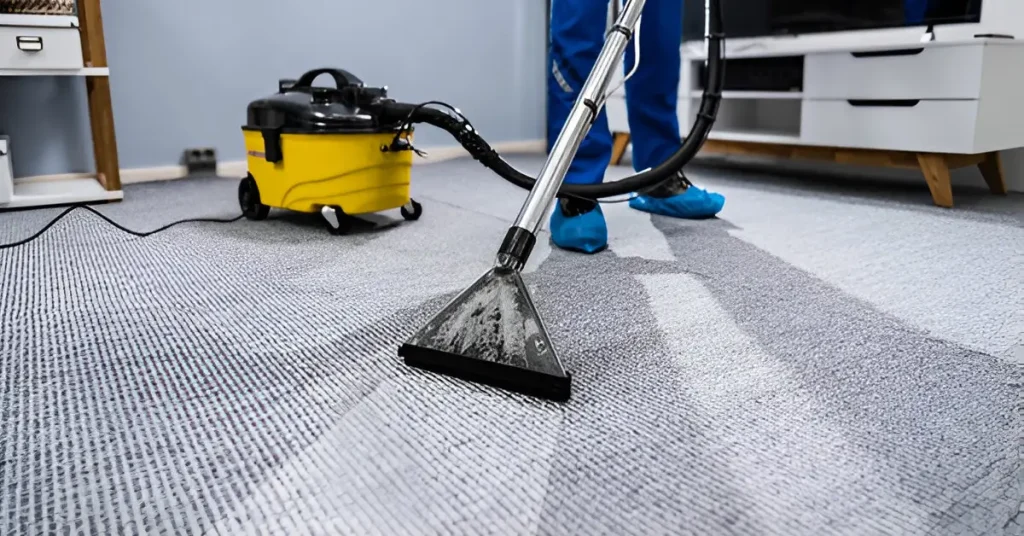
Use a HEPA-filter vacuum to remove loose mold spores from the carpet’s surface. Standard vacuums can release mold back into the air, worsening the problem.
Dispose of the vacuum bag or empty the container outside immediately after vacuuming.
Step 3 – Apply a Cleaning Solution

Baking Soda Method
Sprinkle baking soda over the affected area. It helps absorb excess moisture and neutralize mold odors. Leave it overnight and vacuum the next day.
White Vinegar Solution
White vinegar is a natural mold killer. Spray undiluted vinegar directly onto the moldy area. Let it sit for at least 30 minutes, then scrub with a stiff brush. Rinse with water and blot dry with a towel.
Commercial Mold Cleaner
If vinegar and baking soda aren’t enough, use a commercial mold cleaner. Follow manufacturer instructions for the best results.
Tea Tree Oil Remedy
Mix one teaspoon of tea tree oil with a cup of water. Spray onto the moldy carpet and let it dry. Tea tree oil has antifungal properties that help prevent future mold growth.
Step 4 – Steam Clean the Carpet
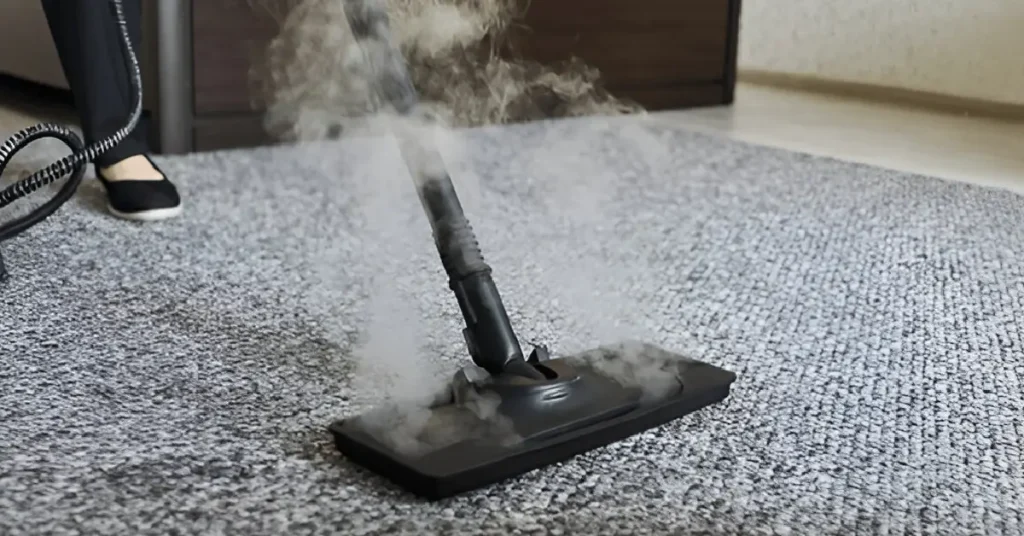
Steam cleaning uses high temperatures to kill mold spores. Run a steam cleaner over the entire carpet, focusing on the affected areas. Avoid over-wetting the carpet, as excessive moisture can cause mold to return.
Step 5 – Rinse and Dry Thoroughly
After cleaning, rinse the area with clean water to remove any remaining solution. Use a dry towel to blot up excess moisture.
To speed up drying:
- Place fans near the carpet.
- Use a dehumidifier to remove moisture from the air.
- If possible, expose the carpet to direct sunlight, which naturally kills mold spores.
Step 6 – Apply a Carpet Deodorizer
After drying, sprinkle baking soda over the carpet to remove lingering odors. Let it sit for a few hours before vacuuming. This step ensures your carpet smells fresh and mold-free.
Step 7 – Prevention Tips
To prevent mold from returning, take proactive steps:
- Vacuum and clean carpets regularly to prevent dirt buildup.
- Fix leaks or moisture problems in walls, ceilings, and under carpets.
- Use a dehumidifier in damp areas, especially during winter.
- Hang removable carpets in sunlight at least once a month to kill hidden mold spores.
Suggested Products for Mold Removal
Choosing the right cleaning products can make mold removal easier:
- Best commercial mold cleaners: Concrobium Mold Control, RMR-86, and EcoClean Solutions.
- Recommended carpet deodorizers: Baking soda-based fresheners or activated charcoal powders.
- Effective steam cleaning machines: Bissell ProHeat 2X, Hoover Power Scrub Elite, or Rug Doctor Deep Cleaner.
When to Hire a Professional Cleaner
Some mold infestations require professional help, especially if:
- The mold covers a large area or has spread deep into the carpet padding.
- A musty smell persists despite repeated cleaning.
- Household members have severe mold allergies or respiratory issues.
More DIY Advice for Home Maintenance
Keeping carpets clean is just one part of home maintenance. For a healthier home:
- Fix leaks and reduce moisture levels to prevent mold growth.
- Improve air circulation in damp rooms with proper ventilation.
- Regularly steam clean carpets to remove allergens and bacteria.
Get Professional Carpet Cleaning with ServiiPro
Mold removal can be a time-consuming process, and without the right equipment, it can be difficult to fully eliminate spores. ServiiPro, a trusted cleaning service in Auckland, New Zealand, offers expert carpet cleaning solutions, including steam cleaning and deep mold removal.
If your carpet has stubborn mold, musty odors, or water damage, ServiiPro can restore it to a fresh, clean, and safe condition. Their trained professionals use advanced cleaning techniques to eliminate mold and prevent its return.
Contact ServiiPro today for a professional carpet cleaning service in Auckland!

